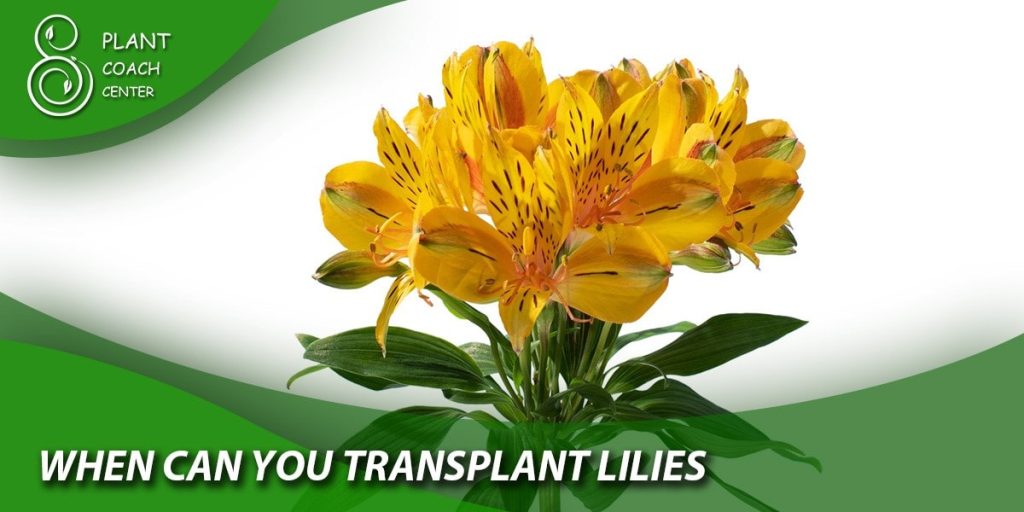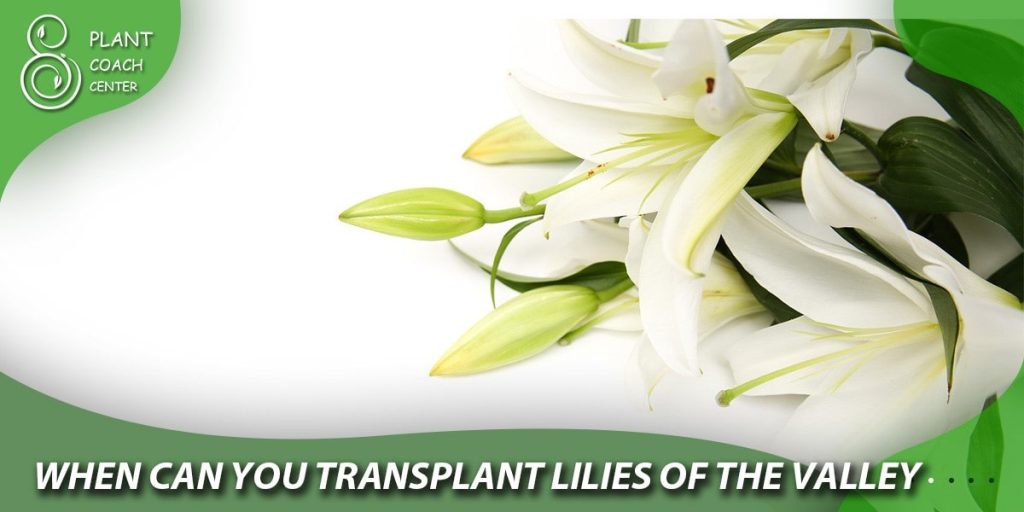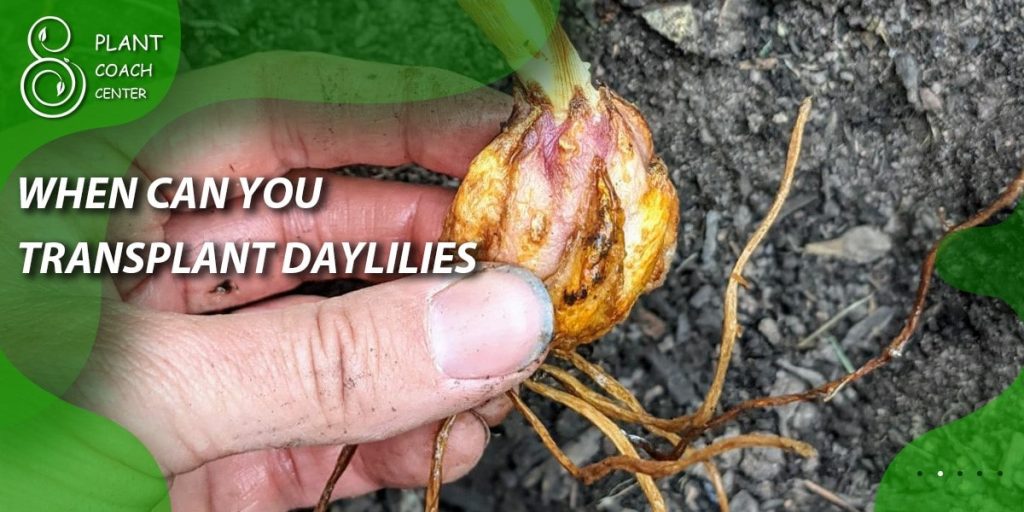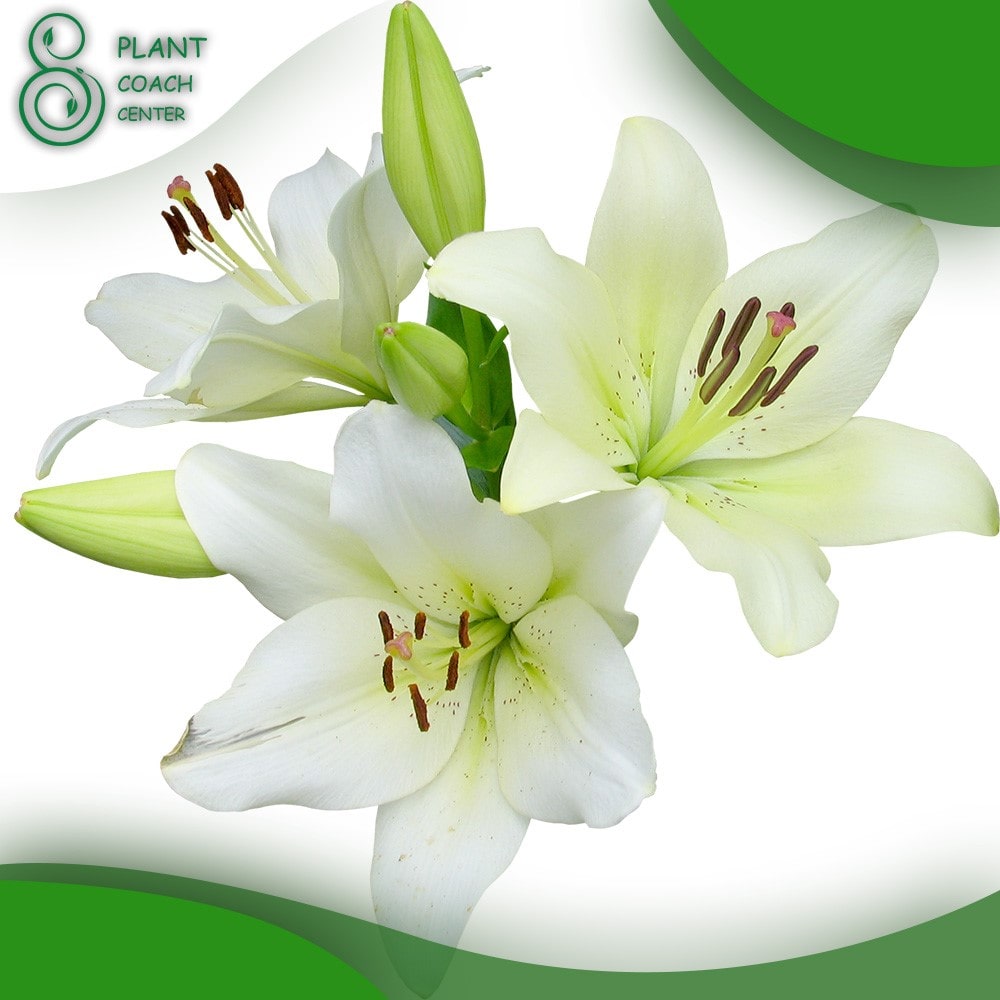When Can You Transplant Lilies?
Transplanting lilies is an exciting endeavor that allows gardening enthusiasts to breathe new life into their outdoor spaces. Whether seeking to rejuvenate a lackluster garden bed, create stunning floral displays, or simply rearrange your existing lily patches, understanding the crucial factors behind successful transplantation is paramount.

Timing, preparation, and care all play pivotal roles in ensuring that your lilies survive the move and flourish in their new environment. Delving into the art of lily transplantation, this article offers a comprehensive guide to help you confidently navigate the process. From choosing the opportune season for transplantation and preparing the lilies for their big move to selecting the perfect spot in your garden and caring for the transplants post-relocation, we’ll explore the key steps and insights to make your lily transplanting journey a resounding success.
Embrace the chance to divide and conquer as we uncover the secrets of dividing lily bulbs for healthier growth and bountiful blooms. Additionally, we’ll discuss troubleshooting tips to revive wilting lilies and tackle potential issues that may arise during or after transplantation. So, prepare your gardening gloves and embark on a transformative journey with your beloved lilies.
Timing Matters: Choosing the Perfect Season for Lily Transplantation
Transplanting lilies at the right time is crucial for their successful establishment and continued growth. While these hardy perennial flowers are resilient, selecting the ideal season for transplantation can significantly impact their overall health and ability to thrive in their new environment. Timing should consider the specific type of lilies you wish to transplant, your region’s climate, and the lily bulbs’ condition.
For most lilies, the best time to transplant is during their dormant period, which typically falls in late autumn or early spring. During these periods, lilies are not actively growing, and their energy is stored in bulbs. This dormancy stage allows them to tolerate the stress of transplantation and encourages faster root establishment once planted in their new location.
In regions with cold winters, transplanting lilies in the fall before the first frost is an excellent option. Doing so allows the bulbs ample time to settle into their new soil and develop roots before the harsh winter temperatures set in. On the other hand, if you live in an area with mild winters, early spring, just as the ground thaws, is the ideal time for lily transplantation. This gives the lilies a head start before the growing season begins.
Avoid transplanting lilies during their active growth phase in the summer, as this can shock the plants and lead to stress-related issues. Summer transplanting can result in wilting, reduced blooming, and even failure to establish in the new location.
Preparation is Key: How to Ready Your Lilies for Transplantation
Proper preparation is the foundation for successful lily transplantation. By getting your lilies ready before the move, you can ensure they have the best chance of thriving in their new location. Here are the essential steps to ready your lilies for transplantation:
Selecting Healthy Bulbs
Inspect your lilies and choose healthy, disease-free bulbs for transplantation. Look for firm, plump bulbs and free from any signs of rot or damage.
Timing the Dig
As mentioned earlier, timing is essential when transplanting lilies. Dig up the bulbs during their dormant period, either in late autumn or early spring, when they are not actively growing.
Preparing the New Site
Before transplanting, prepare the new site by loosening the soil and incorporating organic matter. Lilies thrive in well-draining soil, so ensure the site has good drainage to prevent waterlogged conditions.
Digging and Dividing
Carefully dig up the lily clumps, keeping the root system intact as much as possible. If the lilies have grown into large chunks, consider dividing them. Gently separate the bulbs, ensuring each division has enough roots and shoots for successful growth.
Trimming and Pruning
Trim any damaged or excessively long roots, and cut back the foliage to about two-thirds of its original height. Pruning helps reduce water loss and eases transplant shock.

Storage and Hydration
If you cannot transplant immediately, store the bulbs in a cool, dry place and keep them hydrated by misting them occasionally.
Transplanting Process
When you’re ready to transplant, dig holes in the prepared soil at a depth that accommodates the bulbs without crowding them. Place the bulbs with their shoots facing upwards and cover them with soil, gently tamping it down to remove air pockets.
Watering and Mulching
After planting, water the lilies thoroughly to settle the soil around the bulbs. Apply a layer of mulch to retain moisture and suppress weeds.
Finding the Right Spot: Selecting the Ideal Location for Transplanted Lilies
Choosing the perfect location for your transplanted lilies is critical in ensuring their long-term health and vibrancy. Lilies are sun-loving plants that require specific conditions to thrive, so finding the right spot in your garden is essential. Here are some key considerations to help you select the ideal location for your transplanted lilies:
Sunlight Exposure
Lilies thrive in full sunlight, so choose a spot that receives at least 6 to 8 hours of direct sunlight daily. Avoid areas with excessive shade, leading to weak, leggy growth and reduced blooming.
Soil Quality
Lilies prefer well-draining soil rich in organic matter. Test the ground in the chosen area to ensure a pH level of around 6.0 to 6.8, slightly acidic to neutral. Amending the soil with compost or well-rotted manure can improve its fertility and texture.
Wind Protection
While lilies love sunlight, they are susceptible to damage from strong winds. Planting them in a location protected from harsh winds will prevent their delicate blooms and tall stems from bending or breaking.
Spacing
Give your lilies enough space to grow and spread. Plant bulbs at least 8 to 12 inches apart to prevent overcrowding and provide ample air circulation, which helps prevent fungal diseases.
Drainage
Ensure that the chosen spot has good drainage to prevent waterlogging, which can lead to root rot. Lilies prefer moist soil but can suffer if they sit in standing water for prolonged periods.
Aesthetics
Consider the overall aesthetics of your garden when selecting a spot for your lilies. Lilies make stunning focal points and work well in borders or mixed flower beds, complementing other perennials and annuals.
Avoiding Competition
Remember the nearby plants’ roots and growth habits. Avoid planting lilies close to aggressive, fast-spreading plants that may compete for nutrients and space.
Accessibility
Choose a location that is easily accessible for maintenance and care. This will simplify water and deadhead and tend to your lilies as needed.
Divide and Conquer: The Art of Dividing Lily Bulbs During Transplantation
Dividing lily bulbs is a skillful technique that promotes the plants’ health and vitality and offers an opportunity to multiply your lily collection. Over time, lilies tend to form dense clumps, and dividing these clumps during transplantation is essential to prevent overcrowding, enhance blooming, and rejuvenate the plants. Here’s a step-by-step guide to mastering the art of dividing lily bulbs during transplantation:
Timing is Crucial
Dividing lily bulbs is best done during their dormant period, either in late autumn after the foliage has died back or in early spring before new growth emerges. This is when the bulbs are more robust and resilient to the division process.
Digging Up the Bulbs
Carefully dig up the lily clumps using a garden fork or shovel, mindful of the delicate roots. Gently shake off excess soil to expose the bulbs and their interconnected roots.
Assessing the Bulbs
Examine the bulbs for signs of good health. Look for firm, plump bulbs with no signs of disease or damage. If you come across any soft, mushy bulbs or those showing signs of rot, discard them to prevent the spread of infection to the rest.

Separating the Bulbs
Divide the lily clumps into smaller sections using your hands or a sharp, sterilized knife. Each division should have a healthy, intact bulb with attached roots and at least one shoot.
Pruning and Treating Wounds
Trim any damaged or broken roots, and use a clean, sharp tool to make clean cuts. Treat the cut surfaces with a fungicide to minimize the risk of infection.
Preparing for Transplantation
As mentioned earlier, prepare the new planting site before replanting the divided bulbs. Enrich the soil with organic matter and ensure good drainage.
Planting the Divisions
Plant each divided bulb at the appropriate depth, with the shoot facing upwards, and space them adequately to allow for their future growth.
Watering and Mulching
After planting, thoroughly water the newly divided lilies to help settle the soil around the bulbs. Apply a layer of mulch to retain moisture and regulate soil temperature.
Post-Transplant Care
Keep a close eye on the newly divided lilies, ensuring they receive adequate water and remain free from pests and diseases. They continue to provide regular care and maintenance as they establish their roots.
Nurturing New Roots: Proper Care and Watering for Transplanted Lilies
After successfully transplanting lilies to their new home, the key to ensuring their healthy establishment is providing the right care and watering routine. Proper care during the initial weeks post-transplantation is critical for encouraging the development of strong root systems and robust growth. Here are essential tips for nurturing the new roots of your transplanted lilies:
Watering Schedule
Consistent and adequate watering is vital for the first few weeks after transplantation. Keep the soil evenly moist but not waterlogged. A general rule of thumb is to water deeply once a week, ensuring the water reaches the roots. You may need to water more frequently in hot weather or well-draining soils.
Mulching for Moisture
Apply a layer of organic mulch around the base of the lilies, leaving a small space around the stem to prevent rot. Mulching helps retain soil moisture, regulates temperature, and suppresses weeds, providing a favorable environment for root development.
Monitor Soil Moisture
Keep a close eye on the soil’s moisture level. Stick your finger about an inch into the ground near the lily plant, and water when it feels dry. Overwatering can lead to root rot, while underwatering can cause stress and stunted growth.
Fertilizing Strategically
Avoid fertilizing newly transplanted lilies immediately after planting, as this can shock the plants. Wait until new growth emerges before applying a balanced, slow-release fertilizer to provide essential nutrients for healthy development.
Protect from Extreme Weather
Shield your transplanted lilies from extreme weather conditions. During hot summer days, provide shade during the peak afternoon hours to prevent wilting. Likewise, cover them during frosty nights in early spring to safeguard against cold damage.
Support for Tall Varieties
If you’ve transplanted taller lily varieties, consider providing support to prevent their stems from bending or breaking in windy conditions. Stakes or plant supports placed alongside the branches can be helpful.
Deadheading and Pruning
As your transplanted lilies grow, remove spent blooms promptly to redirect energy toward root development and new growth. After the first season, you can trim back the foliage in late autumn to about 2 inches above ground level.
Regular Inspection
Inspect your transplanted lilies for signs of pests, diseases, or other issues. Early detection and prompt action can prevent potential problems from escalating.

Reviving Wilting Lilies: Troubleshooting Common Issues After Transplantation
Despite your best efforts, there may be instances where your transplanted lilies exhibit signs of stress, such as wilting or other issues. Understanding and addressing these common problems promptly can help revive your lilies and ensure their continued growth and beauty. Here are some troubleshooting tips for common problems that may arise after lily transplantation:
Wilting and Drooping
If your lilies are wilting, especially during hot, sunny days, they might be experiencing water stress. Check the soil moisture levels and adjust your watering schedule if necessary. Deep watering once a week may be required during dry periods. Additionally, provide shade during the hottest parts of the day to reduce water loss through evaporation.
Yellowing Leaves
Yellowing leaves can indicate overwatering or poor drainage. Ensure the soil is well-draining and not waterlogged. If you suspect overwatering, allow the soil to dry out slightly between watering sessions.
Pests and Diseases
Keep a vigilant eye out for pests such as aphids, snails, or slugs, as well as signs of fungal diseases like powdery mildew or botrytis. If necessary, use organic or chemical treatments to control pests and prevent disease spread. Early intervention is essential to protect the health of your lilies.
Root Damage
Some root damage may occur during transplantation, leading to wilting and slow recovery. To prevent this, handle the lily bulbs carefully during the transplanting process, and ensure the soil around the roots is well-compacted to avoid air pockets.
Transplant Shock
It’s normal for lilies to experience some transplant shock after being moved to a new location. In such cases, provide extra care and attention to help them recover. Maintain consistent watering, avoid fertilizing immediately after transplantation, and consider using a transplanting solution to reduce stress.
Nutrient Deficiencies
Yellowing leaves or poor growth may indicate nutrient deficiencies. Lilies require adequate nitrogen, phosphorus, and potassium, among other essential nutrients. Apply a balanced fertilizer or specific nutrient supplements to address any deficiencies.
Insufficient Sunlight
If your lilies are not receiving enough sunlight, they may produce weak and elongated stems with fewer blooms. Ensure they are planted with the recommended sun for their specific variety.
Incorrect Planting Depth
Lilies should be planted appropriately to ensure healthy growth. If they are planted too shallow or too deep, it can affect their ability to establish solid roots and may lead to weak growth.
Conclusion
In conclusion, mastering the art of lily transplantation is a rewarding journey that allows gardeners to breathe new life into their outdoor spaces while expanding their floral repertoire. By carefully selecting the perfect season, preparing lilies for transplantation, finding the ideal location, dividing bulbs, and providing proper care, gardeners can ensure their transplanted lilies’ successful establishment and long-term flourishing.
The nurturing efforts put into reviving wilting lilies, troubleshooting common issues, and offering attentive post-transplant care will be richly rewarded with vibrant blooms and a stunning garden display. As you embark on this horticultural adventure, let the valuable insights shared in this article from PlantCouchCenter.com serve as your guiding companion.
With patience, passion, and a touch of green-thumb finesse, you can transform your garden into a picturesque haven adorned with resplendent lilies that captivate the senses and bring joy to both gardeners and passersby alike.
When is the best time to transplant lilies?
The best time to transplant lilies is during their dormant period, in late autumn or early spring.
How often should I water newly transplanted lilies?
Newly transplanted lilies should be watered deeply once weekly, keeping the soil moist but not waterlogged.
Can I divide lily bulbs during transplantation?
Yes, dividing lily bulbs during transplantation is beneficial for rejuvenating plants and promoting healthier growth.







